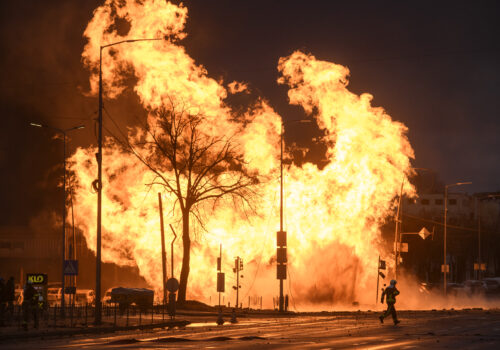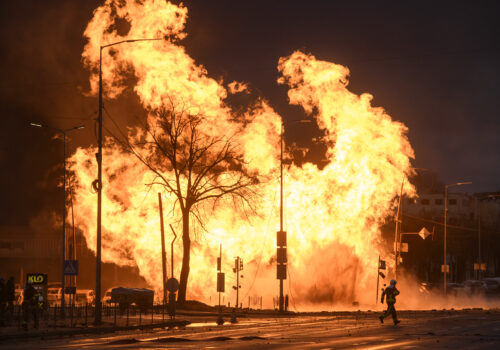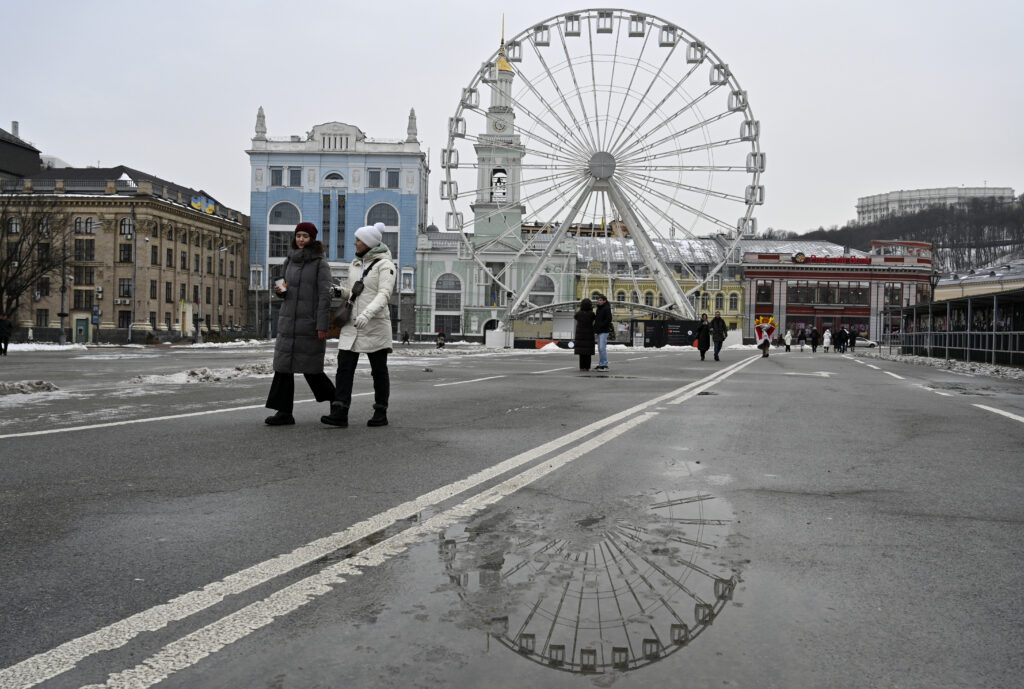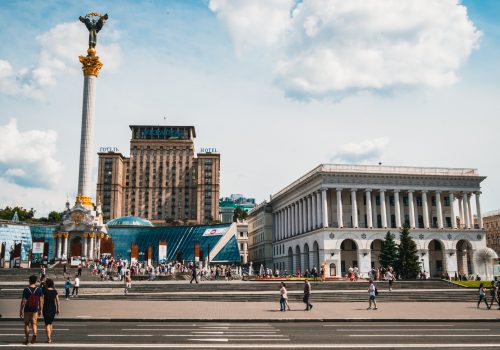
The case for a new Ukrainian Constitution

No one expected the upstart American colonies to win a war of independence against the British Empire. However, after eight years of sacrifice, the underdog nation emerged victorious. The young country’s leaders then analyzed their weaknesses and realized that the existing framework for government needed changing in order to allow the nation to prosper. That led to the adoption of the United States Constitution, a document which has widely influenced the evolution of modern democracy over the last two centuries.
As Ukraine fights for its survival as a nation, it may be time for the country to adopt a new constitution of its own that matches current realities. Ukraine’s present Constitution was created in 1996 and was designed to supersede the 1978 Constitution of the Ukrainian Soviet Socialist Republic. Even though its adoption was a significant step forward in Ukraine’s state-building process, the influence of Soviet socialism was still clearly evident in the document as it was written in 1996.
In addition, it is worth underlining that when the current Constitution was adopted, the newly independent Ukrainian nation was in the midst of an identity crisis and was still struggling to define the nature of its post-Soviet relationship with Russia. It would not be until the Orange Revolution in 2004 that Ukraine established a truly independent identity.
Since 1996, revisions to the Ukrainian Constitution have created further issues. As part of the compromise reached during the Orange Revolution to bring about a peaceful transition of power, constitutional amendments were passed to create a weakened presidency and turn the country into a parliamentary republic. It is often forgotten that the primary author of these amendments was Viktor Medvedchuk, a man with close ties to the Kremlin who was facing treason charges even prior to Russia’s full-scale 2022 invasion.
This now looks particularly inappropriate. At a time when Ukraine is seeking to consolidate its European identity and distance itself from any remaining links to the Russian imperial past, why keep a Constitution shaped by one of the most notorious pro-Kremlin figures of modern Ukrainian history?
As the world watches the Russian invasion of Ukraine unfold, UkraineAlert delivers the best Atlantic Council expert insight and analysis on Ukraine twice a week directly to your inbox.
Many of the more problematic aspects of Ukraine’s Constitution are not related to Medvedchuk’s involvement and can be traced to the document’s conception. For example, the Ukrainian Constitution attempts to cover every imaginable legal contingency and contains 161 articles. In comparison, the US Constitution contains a mere seven articles.
Another key complaint is that the Ukrainian Constitution essentially makes promises the government cannot keep. Citizens are assured of everything from free housing to free medical care and free higher education. In practice, this has proven impossible.
Its not uncommon for constitutions to promise and even guarantee such basic needs, of course. However, the countries that successfully meet these commitments tend to be mature Western democracies with advanced economies that can afford to pay for massive social support programs.
It should be noted that the US Constitution does not guarantee basic needs such as healthcare and education. Instead, provision is delegated to state, federal, or local governments. With a new constitution, Ukraine could similarly delegate social welfare to state agencies, parliament, oblast administrations, municipal authorities, or other government institutions which actually have the capacity to fulfill public needs.
Eurasia Center events

Crucially, Ukraine’s Constitution in its current form remains little known to the wider public. While the average American can often tell you why they like or dislike various different amendments, most Ukrainians are unfamiliar with the details of their country’s Constitution and know little about what rights it actually contains.
A June 2019 survey by the Democratic Initiatives Foundation showed that 47 percent of Ukrainians had never read their Constitution, while 67 percent wanted to have the Constitution amended. It would be fair to say that the current Ukrainian Constitution is hardly near and dear to the hearts of Ukrainians.
Ukraine is clearly not the country it was during the uncertain early years of independence in the 1990s. For that matter, Ukraine is also no longer the nation it was at the time of the 2004 Orange Revolution and the 2014 Euromaidan Revolution. Russia’s ongoing invasion, which began in early 2014 with the seizure of Crimea and escalated dramatically in February 2022, has changed everything.
Today’s Ukraine is undergoing an historic transformation in the crucible of war. It has rejected the legacy of authoritarian empire, exited the geopolitical wilderness, and is now firmly set on a trajectory toward full integration within the European community of nations.
In the current circumstances, merely tweaking or correcting aspects of the existing Ukrainian Constitution is no longer an option. Instead, Ukraine requires an entirely new Constitution reflecting the magnitude of the changes that have taken place in the country over the past decade. This new Constitution should aim to capture the hearts and minds of Ukrainian citizens, while providing a practical framework for the modern European nation that Ukraine seeks to become.
Brian Mefford is the Director of Wooden Horse Strategies, LLC, a governmental-relations and strategic communications firm based in Kyiv, Ukraine. He is a senior nonresident fellow at the Atlantic Council and has lived and worked in Ukraine since 1999.
Further reading
The views expressed in UkraineAlert are solely those of the authors and do not necessarily reflect the views of the Atlantic Council, its staff, or its supporters.

The Eurasia Center’s mission is to enhance transatlantic cooperation in promoting stability, democratic values and prosperity in Eurasia, from Eastern Europe and Turkey in the West to the Caucasus, Russia and Central Asia in the East.
Follow us on social media
and support our work
Image: People seen walking in Kyiv’s Podil district. (Photo by Sergei Chuzavkov / SOPA Images/Sipa USA)



